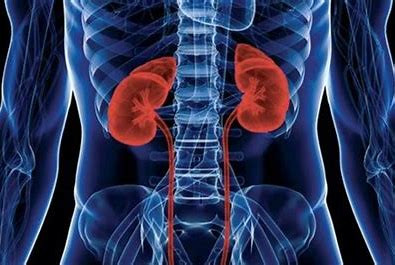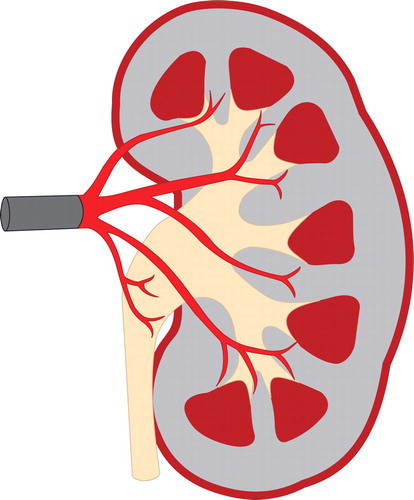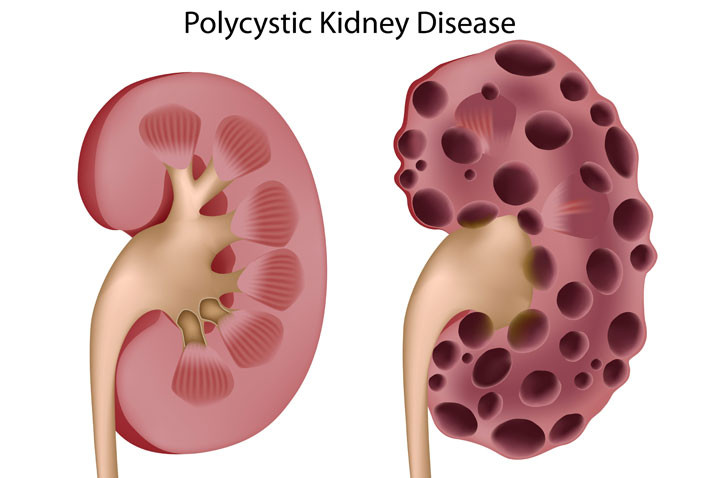Definisi
Sindrom uremik-hemolitik (HUS) adalah suatu kondisi kerusakan dan peradangan pembuluh darah kecil di dalam ginjal. Kerusakan ini dapat menyebabkan pembentukan gumpalan darah di pembuluh darah. Gumpalan ini dapat menyumbat sistem penyaringan di ginjal dan menyebabkan gagal ginjal. Sindrom uremik-hemolitik dapat mengancam nyawa dan menyerang siapa saja, meskipun lebih sering terjadi pada anak. Pada beberapa kasus sindrom uremik-hemolitik dapat disebabkan infeksi bakteri Escherichia coli (E. coli) dan ditandai dengan diare selama beberapa hari. Kondisi lain juga dapat menyebabkan sindrom uremik-hemolitik terutama pada orang dewasa. Kondisi penyakit ini cukup serius dan membutuhkan penanganan segera dan tepat agar dapat sembuh secara maksimal.
Penyebab
Penyebab paling sering sindrom uremik-hemolitik adalah infeksi bakteri E. coli. Penyebab ini paling sering pada kasus sindrom uremik-hemolitik yang dialami anak di bawah usia 5 tahun. Bakteri E. coli adalah bakteri yang normalnya ditemukan di usus manusia normal. Bakteri ini termasuk bakteri baik yang normal dan membantu sistem perncernaan tubuh, hanya ada beberapa jenis saja yang menyebabkan diare.
Terdapat turunan bakteri E. coli yang dapat mengeluarkan racun bernama toksin Shiga. Turunan E. coli ini disebut ECTS. ECTS dapat memasukkan toksin Shiga ke aliran darah dan merusak pembuluh darah. Kerusakan tidak hanya terjadi pada pembuluh darah, tapi komponen darah juga. Seperti kerusakan di sel darah merah dan trombosit yang menyebabkan kematian kedua sel tersebut lebih awal. Ginjal juga akan menerima efek sampingnya. Seperti reaksi sistem imun memberikan efek langsung pada sel ginjal atau penumpukan sel darah merah dan trombosit yang mati di sistem penyaringan ginjal dan menyebabkan sumbatan. Hal ini yang menyebabkan kondisi sindrom uremik-hemolitik.
Selain itu, kondisi lain juga dapat menyebabkan sindrom uremik-hemolitik seperti :
- Infeksi lain. Beberapa infeksi lain yang dapat menyebabkan kondisi ini adalah infeksi bakteri pneumococcus sp., Shigella dysenteriae, Salmonella typhi, HIV, atau influenza.
- Penggunaan obat tertentu. Obat yang berpengaruh adalah perngobatan kanker atau yang berguna untuk menurunkan sistem imun.
- Komplikasi kehamilan dan komplikasi penyakit autoimun atau kanker.
- Pada beberapa kasus, sindrom uremik-hemolitik juga dapat diturunkan secara genetik dari orangtua ke anak. Namun baru muncul ketika ada faktor pencetusnya.
Faktor Risiko
Faktor risiko sindrom uremik-hemolitik berkaitan dengan penyebab penyakit ini. Karena pada kasus mayoritas disebabkan oleh infeksi bakteri E. coli, maka risiko meningkat pada kondisi berikut :
- Konsumsi daging atau produk yang terkontaminasi.
- Berenang di kolam atau danau yang terkontaminasi tinja.
- Memiliki kontak erat dengan orang yang terinfeksi, seperti keluarga atau seseorang di penitipan anak.
- Anak-anak usia 5 tahun ke bawah (Balita).
- Orang dewasa usia 65 tahun ke atas.
- Orang dengan penurunan sistem imun.
- Orang dengan perubahan genetika yang lebih rentan.
Gejala
Gejala sindrom uremik-hemolitik cukup bervariasi tergantung penyebab kondisi ini. Pada kasus sindrom uremik-hemolitik yang disebabkan oleh infeksi bakteri E. coli, gejala akan berkaitan erat dengan masalah saluran cerna. Beberapa gejala tersebut adalah :
- Diare, pada beberapa kasus bisa terdapat darah.
- Nyeri perut, kram, atau kembung.
- Muntah.
- Demam.
Sindrom uremik-hemolitik ini memang dapat disebabkan banyak hal, namun kondisi yang pasti terjadi adalah kerusakan pembuluh darah. Kerusakan ini akan menyebabkan anemia atau sel darah merah yang berkurang, pembentukan gumpalan darah akibat penurunan trombosit, dan kerusakan ginjal. Beberapa gejala yang berkaitan dengan itu adalah :
- Pucat terutama pada wajah dan bagian bawah kelopak mata.
- Kelelahan hebat.
- Napas sesak.
- Mudah memar tanpa penyebab yang jelas.
- Perdarahan yang tidak normal. Seperti tiba-tiba mimisan atau perdarahan di gusi.
- Pembengkakan (edema) di kaki, wajah, tangan, atau bagian tubuh lain.
- Linglung atau kebingungan, kejang, hingga stroke.
- Tekanan darah tinggi.
- Tidak dapat buang air kecil.
Diagnosis
Diagnosis sindrom uremik-hemolitik dapat dilakukan dokter dengan menggali gejala yang dialami, melakukan pemeriksaan fisik, serta pemeriksaan penunjang. Beberapa pemeriksaan yang biasa dilakukan adalah :
- Tes darah. Pemeriksaan ini berfungsi untuk melihat adanya kerusakan sel darah merah dan konsentrasi komponen darah lainnya. Pada pemeriksaan dapat ditemukan penurunan trombosit, sel darah merah, dan peningkatan kreatinin. Kreatinin adalah zat sampah yang biasanya dikeluarkan dari ginjal. Angka yang tinggi menunjukkan adanya kemungkinan kerusakan ginjal.
- Tes urin atau urinalisis. Pemeriksaan urinalisis berguna untuk melihat kandungan urin seperti protein, darah, dan tanda infeksi.
- Tes analisis tinja. Pemeriksaan dilakukan pada sampel tinja untuk mendeteksi adanya bakteri penyebab sindrom uremik-hemolitik ini.
- USG ginjal. Pemeriksaan ini hanya dilakukan untuk memastikan penyebab penyakit bukan sumbatan di saluran kemih.
Tata Laksana
Penanganan atau tatalaksana sindrom uremik-hemolitik adalah perawatan di rumah sakit. Anda akan dirawat untuk menghindari kekurangan cairan dan elektrolit karena sindrom ini. Kunci dari penanganan sindrom uremik-hemolitik adalah pergantian cairan. Dokter akan melakukan beberapa penanganan berikut ketika Anda dirawat :
- Pemasangan infus untuk mengembalikan elektrolit yang membantu tubuh berfungsi kembali.
- Transfusi darah. Pemberian transfusi darah dilakukan secara intravena atau menggunakan jarum infus ke pembuluh darah vena. Jenis transfusi yang dapat diberikan adalah sel darah merah dan trombosit. Sel darah merah akan memperbaiki gejala anemia dan trombosit akan membantu pembekuan darah sehingga mengurangi memar.
- Pemberian obat-obatan. Dokter dapat memberikan obat untuk menurunkan tekanan darah, atau pemberian obat yang mencegah kerusakan pembuluh darah lebih lanjut. Obat disesuaikan dengan penyebab dan gejala.
- Operasi dan prosedur lain. Penanganan ini dilakukan sesuai dengan gejala yang dialami. Dokter dapat melakukan dialisis ginjal atau cuci ginjal yang berfungsi untuk menggantikan fungsi ginjal sementara waktu. Dokter juga dapat melakukan pergantian plasma darah, hingga transplantasi ginjal.
Selain prosedur di atas, dokter juga akan memastikan cairan dan elektrolit di dalam tubuh seimbang, tekanan darah terkontrol, terdapat penanganan kejang, dan pemberian nutrisi yang optimal. Penyakit ini membutuhkan kerjasama beberapa dokter yang memiliki spesialisasi di ginjal, darah, saraf, dan ICU.
Komplikasi
Komplikasi sindrom uremik-hemolitik ini cukup beragam dan sebagian besar bersifat membahayakan nyawa. Berikut komplikasi sindrom uremik-hemolitik yang dapat terjadi :
- Gagal ginjal, yang dapat terjadi secara akut atau kronik.
- Tekanan darah tinggi.
- Stroke atau kejang.
- Koma.
- Masalah pembekuan darah, yang akhirnya menyebabkan perdarahan.
- Masalah jantung.
- Masalah saluran cerna, seperti di usus, kantung empedu, atau pankreas.
Pencegahan
Pencegahan yang dapat dilakukan dengan mencegah infeksi bakteri E. coli dan menghindari penyebab lainnya. Beberapa caranya dengan memperbaiki kebiasaan makan seperti :
- Menghindari konsumsi susu atau jus yang tidak dipasteurisasi
- Cuci tangan sebelum makan dan setelah ke kamar mandi atau mengganti popok bayi.
- Bersihkan dan cuci peralatan makan secara rutin.
- Masak daging hingga matang.
- Bekukan daging di kulkas bila belum akan dimakan.
- Tidak meninggalkan daging di suhu ruangan karena mempermudah pertumbuhan bakteri.
- Pisahkan daging mentah dan daging yang siap dimakan. Jangan letakkan daging siap dimakan di piring yang sebelumnya berisi daging mentah.
- Letakkan daging di bagian bawah kulkas untuk menghindari tetesan darah dari daging.
- Mencuci buah dan sayuran sebelum dikonsumsi.
- Hindari lokasi berenang yang tidak bersih, dan tidak berenang saat mengalami diare.
Kapan Harus ke Dokter?
Segera berobat ke dokter apabila mengalami gejala di atas. Beberapa tanda bahaya yang harus diperhatikan adalah penurunan jumlah urin, pembengkakan hebat, memar yang tidak jelas penyebabnya, perdarahan spontan yang tidak jelas sumbernya, belum buang air kecil selama 12 jam atau lebih, dan kelelahan ekstrim. Segera bawa anak Anda atau diri Anda ke IGD bila mengalami tanda tersebut. Ikuti penanganan yang dianjurkan dokter agar penyakit dapat ditangani dengan baik.
Mau tahu informasi seputar penyakit lainnya? Cek di sini, ya!
- dr Anita Larasati Priyono
Hemolytic uremic syndrome (HUS) - Symptoms and causes. Mayo Clinic. (2022). Retrieved 11 July 2022, from https://www.mayoclinic.org/diseases-conditions/hemolytic-uremic-syndrome/symptoms-causes/syc-20352399.
Parmar, M. (2021). Hemolytic-Uremic Syndrome: Practice Essentials, Background, Pathophysiology. Emedicine.medscape.com. Retrieved 11 July 2022, from https://emedicine.medscape.com/article/201181-overview
Kahn, A. (2016). Hemolytic Uremic Syndrome: Causes, Symptoms and Diagnosis. Healthline. Retrieved 11 July 2022, from https://www.healthline.com/health/hemolytic-uremic-syndrome#prevention.
Hemolytic Uremic Syndrome (HUS). Health.ny.gov. (2017). Retrieved 11 July 2022, from https://www.health.ny.gov/diseases/communicable/e_coli/fact_sheet.htm.
Hemolytic Uremic Syndrome (HUS). National Kidney Foundation. (2022). Retrieved 11 July 2022, from https://www.kidney.org/atoz/content/hemolytic.











